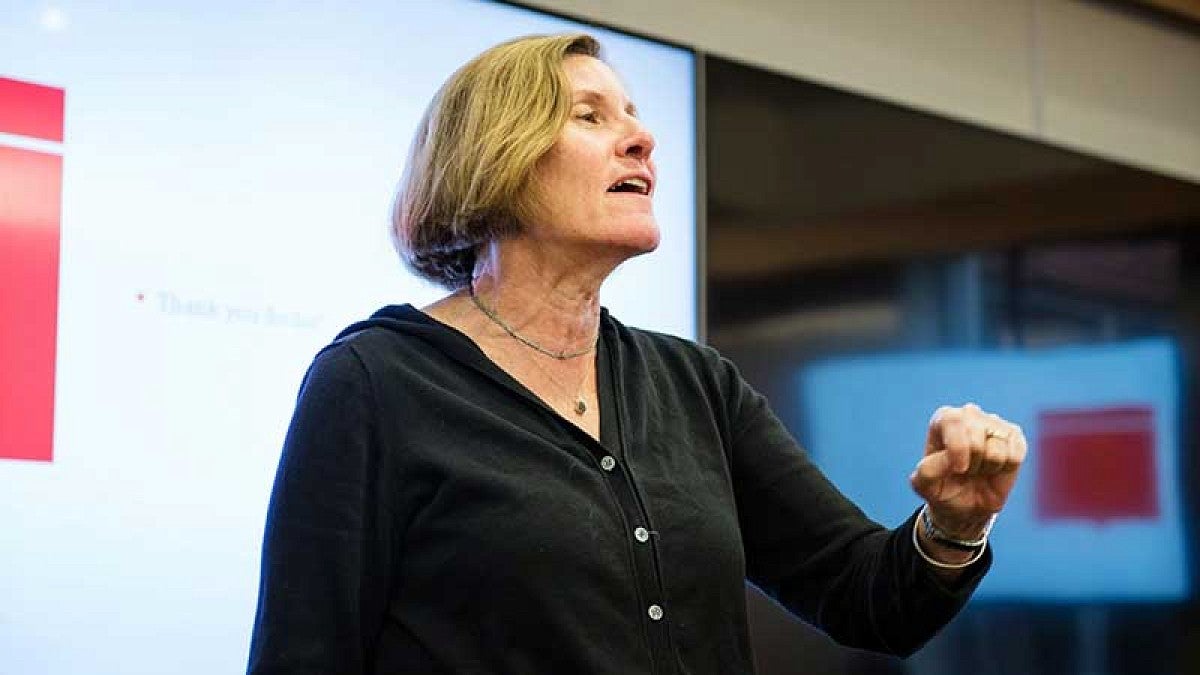No one has a playbook for communicating about the coronavirus. COVID-19 has caused public relations and advertising specialists to reevaluate how they exchange messages in the face of worldwide social and economic disruption.
Students in the master’s in advertising and brand responsibility program in the School of Journalism and Communication, led by program director Kim Sheehan, have been tracking how organizations adjust their messaging strategies to discuss the pandemic. The research project fits in with the award-winning program’s unique focus on brand communication dedicated to social good.
Sheehan and her students collected emails, Twitter posts and television ads distributed by companies around the United States and presented them to consumers through feedback surveys. Her class then used this data to develop several white papers offering advice to companies about how to be sensitive and effective in their communications.
Advertising and brand responsibility master’s students sent surveys regarding emails and Twitter to more than 250 consumers through Amazon’s Mechanical Turk crowdsourcing platform on April 6. On April 16, they sent additional surveys to gauge responses to television ads. Three weeks later, they sent another round of surveys to see if perceptions had changed.
“Consumers are searching for something, anything, that can remind them the world is not completely falling apart,” Sheehan said. “Television advertising and brand emails and tweets help consumers understand how to negotiate the ‘new normal’ and provide a degree of comfort that there is a life outside of one’s four walls.”
The students were surprised to find that consumers regarded email messages with “condolences to people who have suffered during the pandemic” to be the least appropriate.
“I believe the messages came from a good place — brands wanting to say something and to signal empathy,” said Kelli Matthews, public relations senior instructor in the School of Journalism and Communication. “Unfortunately, it’s also become cliché and trite very quickly. It’s hard to stand out and be genuine, authentic and relevant.”
A specialist in strategic communication, Matthews helps organizations navigate appropriate messaging for maximum results. As a contributor to Forbes, she is advising pandemic communications on a national scale.
Some brands the master’s students investigated were successful at positively reaching their consumers. More than 80 percent of respondents said it would be appropriate for brands to “remind us we are all in this together” on Twitter, highlighting that brands can reach people with different mindsets by shifting platforms.
Half of the respondents said they think more positively about brands that reduce misinformation about the coronavirus. With their vast networks of followers, public relations managers may have saved thousands of lives by getting the right information out and helping the World Health Organization fight what the organization declared a misinformation-driven “infodemic.”
In the three weeks between the surveys, consumers’ level of concern decreased. According to an April 27 survey, people began to accept more message categories as appropriate for email.
Based on her experience guiding company communications through previous crises, Matthews said brands would have to monitor moods to find the right timing to pivot back to normal messaging.
“Every brand needs to be doing environmental scanning, keeping an ear to the ground and talking to its customers and constituents,” Matthews said. “Brands certainly need to be sensitive — and relevant — but they don’t need to go dark.”
Sheehan believes the crisis reflects the growing demand for brands to transition away from their commercial mandates and embrace their roles as community members.
“Most consumers understand brands are trying to keep sales going, so they aren’t surprised or insulted by most messages,” she said. “Brands are a part of everyone’s daily lives, and so people expect to see brands engaged during this time. However, consumers can easily tell which messages are authentic, courageous and committed to social good.”
Sheehan said brands talking about their efforts to keep employees safe is an excellent example of this — if they’re true. Consumers will investigate whether they are genuinely helping employees. If brands are authentic, their customers will see their efforts in a positive light. But if they are spinning the truth, their brand reputation will pay the price.
—By Adam Spencer, School of Journalism and Communication


